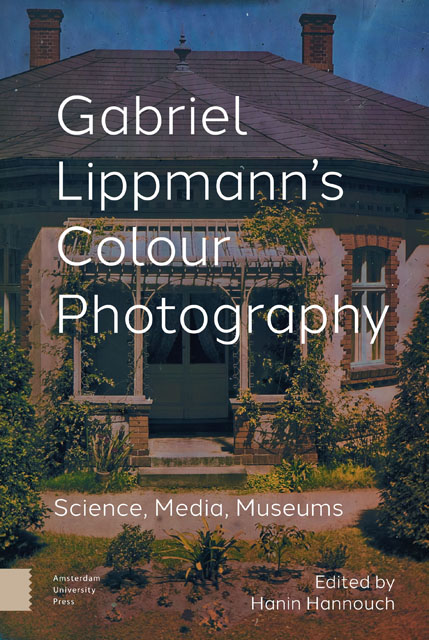Book contents
- Frontmatter
- Table of contents
- Gabriel Lippmann’s Colour Photography: A Critical Introduction
- Part I The Science of Colour Photography and the Colour Photography of Science
- Part II Media History, Aesthetics, and Culture
- Part III Contemporary Reception and Future Trajectories
- Afterword: Building Bridges over Standing Waves
- Index
4 - Lost in Description: The Misunderstanding of Frederic Ives (1856–1937) and the Experiments of His Son Herbert (1882–1953) on Lippmann’s Interference Photography
Published online by Cambridge University Press: 16 November 2022
- Frontmatter
- Table of contents
- Gabriel Lippmann’s Colour Photography: A Critical Introduction
- Part I The Science of Colour Photography and the Colour Photography of Science
- Part II Media History, Aesthetics, and Culture
- Part III Contemporary Reception and Future Trajectories
- Afterword: Building Bridges over Standing Waves
- Index
Summary
Abstract
Published in 1908, Herbert Ives’ An Experimental Study of the Lippmann Colour Photograph translated Gabriel Lippmann's work from French to English while modernising the terminology for the twentieth-century optical physicist. In this article, I explain how Herbert Ives’ paper, established Lippmann's process within the discipline of physics, but concealed the practical assistance offered to Lippmann by the industrialist Lumiere brothers. I also explore the sceptical criticisms of his father, American artisan-inventor Frederic Ives whose own colour process competed with Lippmann's for display and publicity. At the end of the nineteenth century, these competing processes exemplified divisions between artisanphotographers and professional experimenters. Whereas Frederic Ives relied solely on patents and demonstrations to promote his inventions both in the USA and in Europe, Lippmann deployed wave theory to an audience at the Académie des Sciences in Paris.
Keywords: Frederic Ives, Herbert Ives, Gabriel Lippmann, history of science, translation, Lumière brothers
Gabriel Lippmann had gained credibility within the scientific community when he revealed his theory of the solar spectrum to the Academie in 1891. The spectrum provided a photographic image of an instrumentally isolated object, the sun, via a spectroscope with the ability to record the characteristic Fraunhofer black lines, familiar to astronomers. It demonstrated the full potential of instantaneous natural colour photography: a photographic process without the artifice of pigment or the intervention of colour separations. Like a daguerreotype, the Lippmann photograph had to be held in the available light at the right angle for the image of the spectrum to be visible. For a larger audience, light reflecting from the surface of the plate could reconstruct the image to project it onto a white board or screen. This projection might appear to the audience to be an aesthetically satisfying simulacrum of nature's “rainbow.” When Lippmann presented this photograph, his first claim for this invention within his paper was the provision of a photographic image that would last indefinitely; it would not fade or decay under light (Lippmann 1891, 274): “Je me suis proposé d’obtenir sur une plaque photographique l’image du spectre avec ses couleurs, de telle façon que cette image demeurât désormais fixée et pût rester exposée indéfiniment au grand jour sans s’altérer.”
- Type
- Chapter
- Information
- Gabriel Lippmann's Colour PhotographyScience, Media, Museums, pp. 113 - 130Publisher: Amsterdam University PressPrint publication year: 2022

